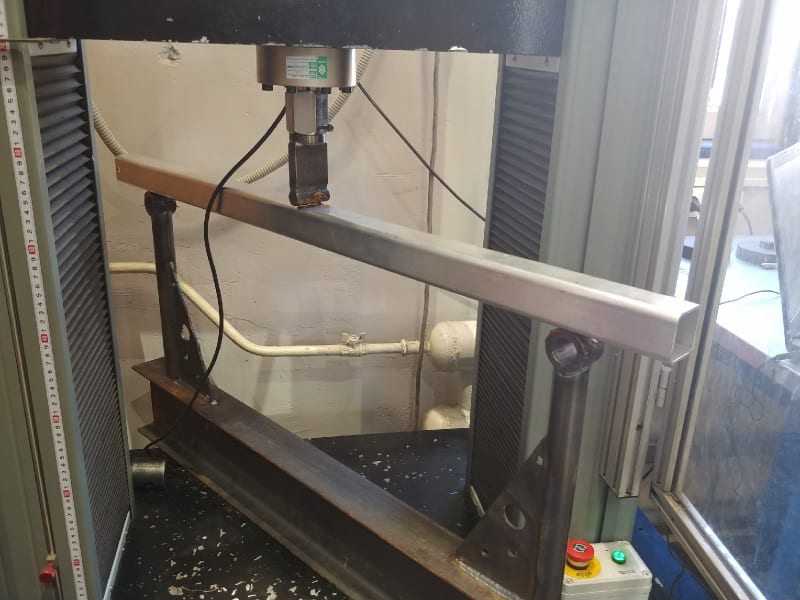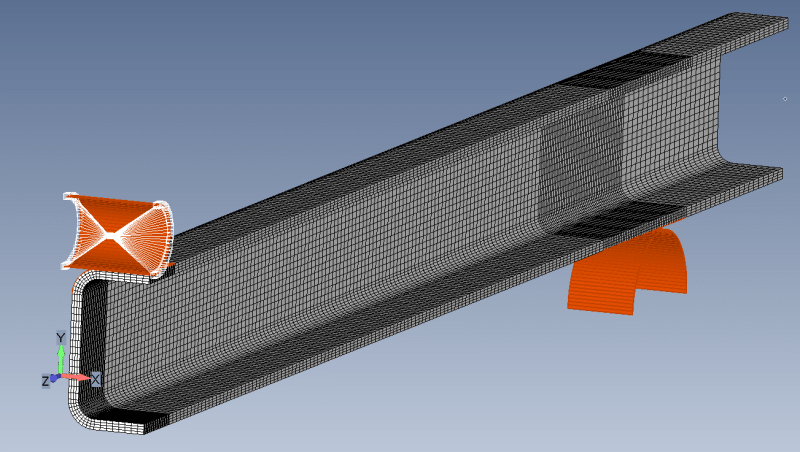Hesy33
Materials
- Feb 19, 2021
- 9
Hi all,
Note: I have read through many posts before posting here as I was not able to find a convincing answer.
My first post but a long time follower.
So please be kind If am using the wrong forum to post this.
I am trying to model a 4- point bending test of a ceramic composite.
But we treat it as a monolithic and isotropic material and hence no layering required.
From experiments, I have breaking load at 3000 N.
The material has an E=350 GPa and Flexure strength of 330 MPa.
I have applied the same load to see if the stress levels match. But I'm getting only 60 MPa for the 3 kN also deformations seem to less. So my model is clearly stiff.
I am meshing with Tet elements and have contact on bottom rollers and loads on curves. (I have tried other methods of loading and support but with no luck)
What is the best to model a 4 point bending test and what could be the problem in my model ? Attached is a picture of the FEA.
Note: I have read through many posts before posting here as I was not able to find a convincing answer.
My first post but a long time follower.
So please be kind If am using the wrong forum to post this.
I am trying to model a 4- point bending test of a ceramic composite.
But we treat it as a monolithic and isotropic material and hence no layering required.
From experiments, I have breaking load at 3000 N.
The material has an E=350 GPa and Flexure strength of 330 MPa.
I have applied the same load to see if the stress levels match. But I'm getting only 60 MPa for the 3 kN also deformations seem to less. So my model is clearly stiff.
I am meshing with Tet elements and have contact on bottom rollers and loads on curves. (I have tried other methods of loading and support but with no luck)
What is the best to model a 4 point bending test and what could be the problem in my model ? Attached is a picture of the FEA.



